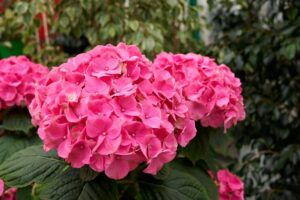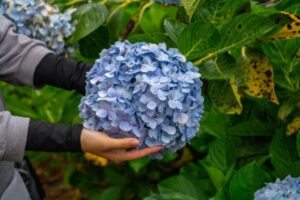Hydrangeas can beautify your garden or balcony, but it is important to know that they are toxic to animals, so if you have a pet, keep them out of their reach. What else do you need to know about this beautiful flower?
If you are looking for a plant with large flowers, then you will not go wrong with the hydrangea. This flower can grow like a bush, it grows quickly and will fill the space in your garden in no time.
Hydrangeas are perennial plants that produce flowers continuously year after year. Planting position, care, feeding and watering routine can affect the level of flowering.

A few tips for growing hydrangea:
Planting
It is best to plant the hydrangea in autumn or early spring. It is important to give it enough time to establish a healthy root system before flowering.
The best time of day to plant is early morning or late afternoon. The cooler parts of the day offer protection from heat stress. Until a healthy plant is established, water the hydrangea frequently.
The best place to plant the hydrangea is a sheltered location, with sunny mornings and afternoons with shade.
Avoid planting directly under trees, so that it is not deprived of water and nutrients, and also plant it in a place where it is protected from strong wind, because the wind can destroy its flowers and damage its petals.
As for the soil, good drainage is vital. Although hydrangeas like moist soil, they do not tolerate too much humidity.
Wet soil with poor drainage can cause root rot in just a few weeks.

Propagation of hydrangea
The easiest way to propagate hydrangea is by cuttings. Simply cut a branch a few centimeters long. Choose newer green growth, not old growth that will be difficult to root.
Put in rooting hormone and plant the sprig in a pot. Place a plastic cover over the top to increase humidity levels and encourage new growth.
Hydrangea care at the end of the season
When the flowering season is over, tidy up the plants by cutting and pruning.
Depending on the planting site, if it is exposed to intense cold, you can cover the hydrangea with fabric to protect it from frost, and also mulching can help protect the root system during winter days.
Hydrangea toxicity
Hydrangeas are considered poisonous to humans and animals. The leaves, buds and flowers contain cyanogen glycoside, which can cause nausea and vomiting if swallowed.
For those with sensitive skin, they may also cause minor irritation.
Ingestion is usually not fatal, especially when it is in small amounts, but it is recommended that the plants be kept as far away from children and pets as possible.

